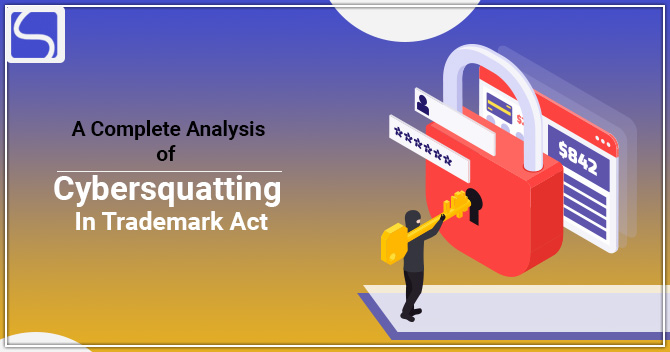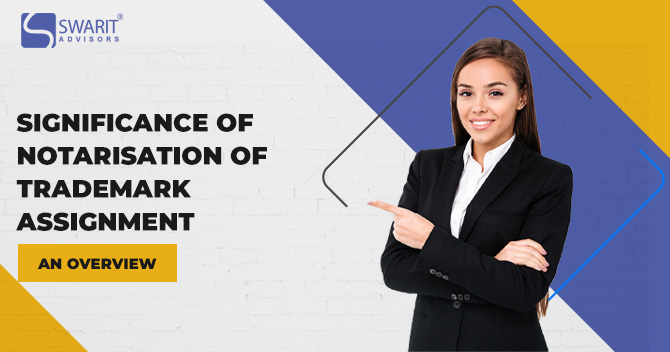A Complete Analysis of Cybersquatting in Trademark Act

Karan Singh | Updated: Sep 14, 2021 | Category: Trademark
Today the use of the internet has become an essential part of our life, and it has transformed it into a strong platform for companies to encourage, advertise and sell goods & services. Unluckily, Cybersquatting, which is the outcome of misleading and unauthorised conduct, has risen as well. Due to this intellectual property like Trademark Registration is a significant process for protecting from Cybersquatting. In this blog will discuss the meaning of Cybersquatting in Trademark Act and how Cybersquatting interferes with a brand identity.
Table of Contents
What is Cybersquatting?
Before we discuss the impact of Cybersquatting in Trademark Act, it is necessary to know the meaning of Cybersquatting. Cybersquatting is also known as Domain Name Squatting; it is the act of trafficking in, registering, or using a name of domain with the bad faith intention of profiting from the goodwill of someone’s Trademark. The cyber squatter then tries to sell the domain to the company or individual that owns the Trademark inserted within the name at an overstated price. The word “squatting” comes from the act of occupying an abandoned/unoccupied space or building that the squatter doesn’t rent, own, or have consent to use. On the other side, Cybersquatting[1] is different in that the domain names that are being “squatted” are (sometimes but not always) paid by the cyber squatters at the time of the registration process.
Cyber squatters usually demand much higher rates than the ones they paid for it. Some cyber squatters make insulting remarks about the business or individual the domain is supposed to serve to convince the subject to purchase the domain name from them. Others monetise their squatting process by posting paid links to the original site that the user likely wanted via advertisement networks.
There are various types of Cybersquatting that come under the immense category of Cybersquatting. Classic Cybersquatting, Pseudo, Cyberpiracy, and Typosquatting are examples of these variations. Classical Cybersquatting is the simple and easy registration of a Domain Name based on a Trademark with the intent of selling it to the legal owner of the Trademark for a profit.
The Trademarks use in domain names with the goal of attracting more traffic to the list of similar web pages recognised by a name is referred to as “Cyberpiracy”. At the same time, Pseudo Cybersquatting is explained as the Domain Name Registration without actually using it or associating it to any online websites/web pages. There are also known as “Blocking Registrations”, and they intend to avoid legitimate correct holders from using domain names.
New target for a Cyber Squatter to Spoil the Brand – Cybersquatting in Trademark Act
Social Media is the new target for Cyber squatter to defame the brand. With the importance of Social Media platforms such as Twitter, Instagram, and Facebook, a new way of Cybersquatting has increased, which trademarked brands or dignitaries’ names, or public figures are registered on famous Social Media websites. Because of the social media platforms’ popularity, businesses have built profiles on these sites in order to gain more clients. To develop robust goodwill & credibility for their signs, social media websites have begun providing verification tags to relevant organisations.
For example, there was a case when Tony La Russa’s Lawsuit against Twitter was willingly dismissed; his case showed the threats of these websites’ new username features. The manager of Tony La Russa, St. Louis Cardinal, had filed a Cybersquatting complaint against Twitter. The issue was that a Twitter account including La Russa’s name had posted a photo of LA Russa with the caption “Hey there! Tony La Russa is now using a Twitter Account”.
This profile encouraged Twitter users to follow the profile of La Russa to stay updated on his activities. The notifications were defamatory & hateful, as per LA Russa. He was informed that the maker of the profile had done so in bad faith and profited from the Trademark of LA Russa. After the parties had resolved the problem, La Russa filed a voluntary dismissal. The use of unpleasant tags and the usernames’ reservation are chiefly harmful to the owners of the Trademark. Facebook agrees that violation username can be a huge deal, mainly if someone else is attempting to create a reputation using a Trademark that the correct owner of a Trademark has spent a lot of time developing.
Cybersquatting via username violation prevents the owner of Trademark from using the well-known username, preventing him from using his Trademark on social media. Username reservation by bad faith may also spoil & damage the credibility of the mark. The owner of Trademark loses leverage of his Trademark credibility when someone maintains a username with hostile intent.
What are the Remedies for Cybersquatting in Trademark Act or Law?
At present, there is no law in India that addresses Cybersquatting crimes. To avoid possible Cybersquatting crimes, we need strict laws that provide penalties for Cyber squatters. On the other side, victims should take the following remedies for Cybersquatting in Trademark Act or Law:
- The victim can Bring Arbitration Proceedings Under the ICANN: The victim has the following options against Cyber Squatters:
- Filing a case against multiple courts in India;
- Can send a C&D (Cease & Desist) notice to the cyber squatter. The victim can obtain a passing-off order against the cyber squatter.
- UDRP (Uniform Dispute Resolution Policy): The UDRP was first introduced by the ICANN (Internet Corporation for Assigned Names & Numbers), and it is a part of the Registration Agreement you digitally agree to when you buy a domain from a website like GoDaddy, BigRock, or others. To start a proceeding under the UDRP, the owner of Trademark must pick one of the authorised service providers. For example, CIIFRC (Canadian International Interest Dispute Resolution Centre), ADNDRC (Asian Domain Name Dispute Resolution Centre), WIPO, etc.
According to Para 4(a) of the UDRP, a complainant must prove all three elements below:
- Domain name similar or confusingly similar to a Trademark or Service Mark in which the complainant has right;
- The violator has no right or legitimate in respect of the domain name;
- The name of the domain has been registered and is being used in bad faith. The following conditions, but not limited to, if considered by the panel to be present, shall be proof of the registration & usage of a domain name in bad faith for the purposes of Paragraph 4(a)(iii):
- Conditions stating that domain name is registered exclusively for the objective of renting, selling, or otherwise transferring the registration of domain name to the complainant, who is the Trademark owner or Service Mark owner;
- The domain name is register to prevent the Service Mark or Trademark owner from showing the mark in an equivalent domain name, provided that the violator has been involved in a pattern of such conduct;
- The violator or infringer has registered the domain name primarily to break off a business competitor;
- By using the domain name, the violator has intentionally attempted to attract, for commercial gain, internet users to his site or other online location, by creating confusion with the mark of the complainant as to the source, affiliation, sponsorship, or via the endorsement of his site.
- .In Domain Name Dispute Resolution Policy (INDRP): INDRP, which is considered identical to the UDRP, would be applicable to “.in” domain names. As per the policy of INDRP, someone who believes a domain name registered by the .IN Registry violates on their statutory rights or interests can file a complaint with the .IN Registry and pay the fees. The complainant should fulfil the requirements as described in Para 4(a) of the UDRP Policy and paragraph 4 of the INDRP.
Conclusion
After understanding the meaning of Cybersquatting in the Trademark Act, it is clear that Cybersquatting has a cascading impact on society’s social and economic interest, so it should be prosecuted to offer a deterrent effect. Governments worldwide are looking at Cybersquatting as a severe problem. To fight Cybersquatting, various countries around the world have implemented a variety of initiatives.
Read our article:What are the Well-Known Trademark Infringement Cases in India?














